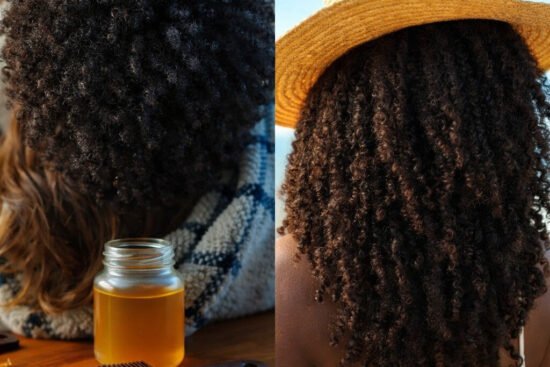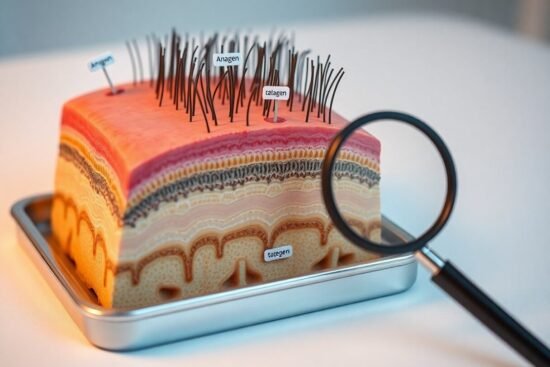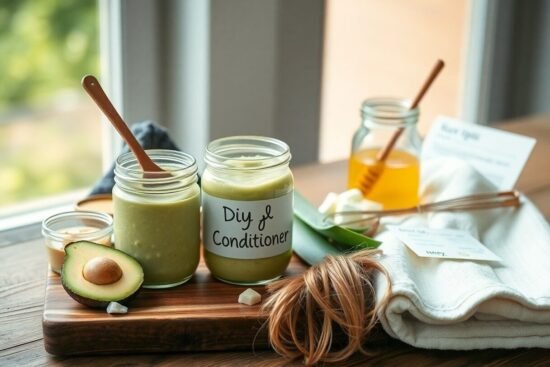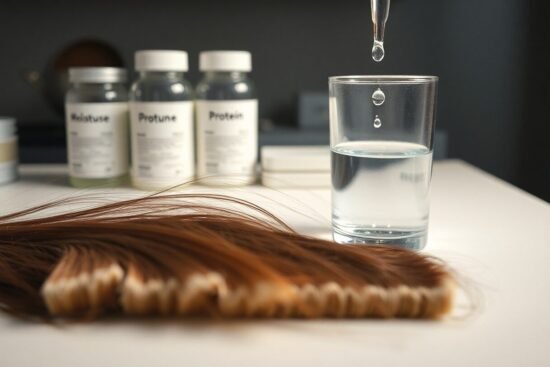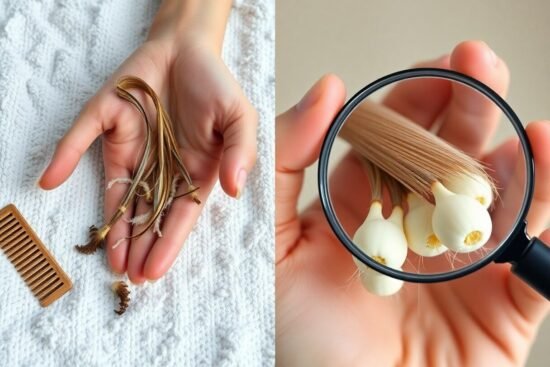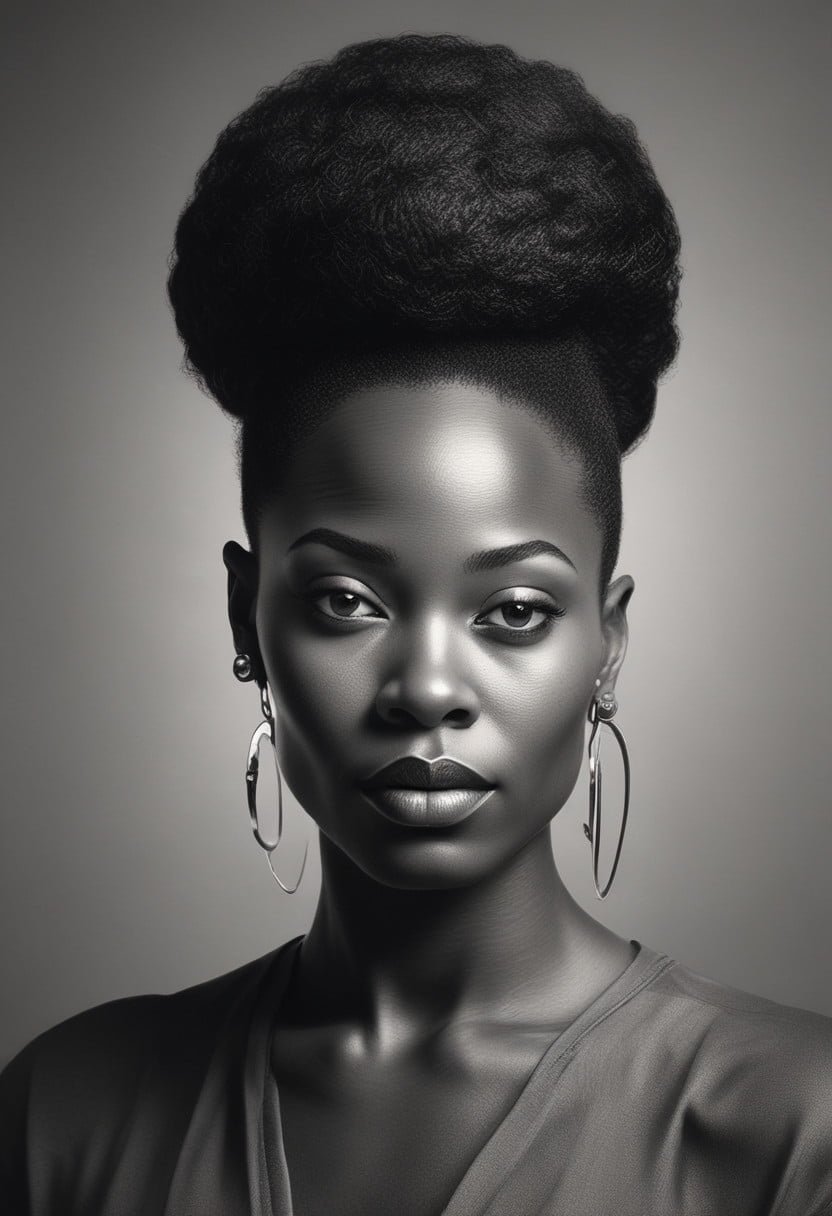
Taking care of black women’s hair can be a rewarding and enriching experience, but it can also seem overwhelming if you’re unfamiliar with the specific needs and challenges involved. With the right knowledge and techniques, you can ensure that black women’s hair stays healthy, moisturized, and thriving. From understanding different hair types to incorporating proper cleansing and styling practices, this article will guide you through the essential steps to effectively care for black women’s hair, promoting its natural beauty and vitality.
Understanding the Nature of Black Women’s Hair
Insight into the Science of Afro-textured Hair
Black women’s hair, also known as Afro-textured hair, is unique and requires specific care and attention. It is characterized by its tight curl pattern, which is a result of the shape of the hair follicle. The main difference between Afro-textured hair and other hair types is the level of sebum production. Afro-textured hair tends to be dryer due to its natural structure, making it more prone to breakage and damage. Understanding the science behind Afro-textured hair is essential for proper care and maintenance.
Understanding Curl Patterns and Hair Types
Afro-textured hair comes in various curl patterns, from tight coils to loose curls. The standard classification system for hair types, known as the Andre Walker Hair Typing System, helps categorize black hair into different categories ranging from Type 3 to Type 4. Type 3 hair is characterized by looser curls, while Type 4 hair includes kinky coils. Knowing your hair’s curl pattern can help you tailor your hair care routine accordingly, ensuring the right products and techniques are used.
Why Black Hair Needs Special Care
Black hair requires special care due to its unique characteristics. The tightly coiled structure of Afro-textured hair makes it more susceptible to breakage and dryness. Additionally, the use of chemical treatments such as relaxers and hair dyes can cause damage if not properly managed. Special care is needed to maintain moisture, prevent breakage, and promote healthy growth. By understanding and addressing these specific needs, you can ensure that your black hair remains strong, healthy, and beautiful.
Selecting the Right Products for Black Hair
Choosing Moisturizing Shampoo and Conditioner
When selecting shampoo and conditioner for black hair, prioritize moisturizing products. Look for sulfate-free formulas, as sulfates can strip the hair of natural oils, leading to dryness and further damage. Moisturizing shampoos and conditioners help nourish and hydrate the hair, ensuring it retains moisture and stays soft and manageable. Ingredients such as shea butter, coconut oil, and aloe vera can provide the necessary hydration and nourishment for healthy black hair.
Benefits of Leave-in Conditioners
Leave-in conditioners are a great addition to your hair care routine, as they provide extra moisture, detangling benefits, and protection. They are designed to be left in the hair without rinsing, providing continuous hydration throughout the day. Leave-in conditioners also help to reduce frizz and enhance the natural curl pattern, making them a valuable tool for styling and managing black hair. Look for leave-in conditioners specifically formulated for black hair to ensure optimal results.
The Role of Hair Oils and their Different Types
Hair oils play a crucial role in black hair care, as they provide essential nutrients, seal in moisture, and add shine. There are various types of hair oils to choose from, including coconut oil, argan oil, jojoba oil, and castor oil, each offering different benefits. Coconut oil is known for its moisturizing properties, argan oil helps reduce frizz, jojoba oil is great for scalp health, and castor oil can aid in promoting hair growth. Experiment with different oils to find the ones that work best for your hair.
When and How to Use Deep Conditioners
Deep conditioners are essential for maintaining the health and moisture balance of black hair. They penetrate the hair shaft deeply, providing intense hydration and nourishment. Incorporate a deep conditioning treatment into your hair care routine once a week. Apply the deep conditioner after shampooing and leave it on for the recommended time, allowing the product to work its magic. For added benefits, cover your hair with a shower cap or towel to create heat, which helps the conditioner penetrate the hair strands even more effectively.
Understanding Hair Porosity
What is Hair Porosity and Why is it Important
Hair porosity refers to the ability of the hair to absorb and retain moisture. Understanding your hair’s porosity is crucial for determining the best care and styling methods. Hair can have low, medium, or high porosity, each with its own characteristics and needs. Low porosity hair has tightly closed cuticles, making it more resistant to moisture absorption. Medium porosity hair has slightly opened cuticles, and high porosity hair has highly opened cuticles. Knowing your hair’s porosity level helps you choose the right products and techniques for optimal moisture retention.
Determining Your Hair Porosity
To determine your hair’s porosity, you can perform a simple test at home. Take a clean strand of hair and place it in a glass of water. If it floats on top or takes a long time to sink, it indicates low porosity. If it sinks quickly, it suggests high porosity. Medium porosity hair will sink slowly to the middle of the glass. This test can give you an idea of your hair’s porosity level and guide you in selecting the appropriate products and treatments for your specific needs.
Hair Care according to Hair Porosity Levels
Once you have determined your hair’s porosity, you can tailor your hair care routine accordingly. Low porosity hair benefits from lightweight products that won’t weigh it down, such as water-based products and light oils. Medium porosity hair requires a balance of moisture and protein treatments to maintain optimal health, while high porosity hair needs extra moisture and sealing to prevent excessive moisture loss. Adapting your routine based on your hair’s porosity will help ensure it stays healthy, hydrated, and manageable.
Implementing a Healthy Washing Routine
Importance of Washing Black Hair Regularly but Not Too Often
Maintaining a regular washing routine is crucial for black hair care. However, it’s important to strike a balance, as washing too frequently can strip the hair of its natural oils, leading to dryness and breakage. Aim to wash your hair once every 1-2 weeks, adjusting the frequency based on your hair type, porosity, and lifestyle. Regular washing removes dirt, product buildup, and excess oils from the scalp, promoting a clean and healthy environment for hair growth.
How to Wash Black Hair Without Stripping It
To wash black hair without stripping it, start by wetting your hair with lukewarm water. Avoid using hot water, as it can lead to dryness. Use a moisturizing shampoo specifically formulated for black hair, focusing on the scalp and roots. Gently massage the shampoo in, stimulating the scalp to promote blood circulation. Rinse thoroughly, ensuring all the shampoo is removed. Follow up with a moisturizing conditioner, focusing on the mid-lengths and ends. Leave the conditioner on for a few minutes before rinsing with cool water to seal the hair cuticles and enhance shine.
Balancing Between Cleansing and Moisturizing
Finding the right balance between cleansing and moisturizing is key to maintaining healthy black hair. While it’s essential to keep the scalp and hair clean, it’s equally important to ensure it remains adequately moisturized. After washing and conditioning, consider using a leave-in conditioner to provide added moisture and protection. Regular deep conditioning treatments will also help replenish moisture and nourish the hair. By striking a balance between cleansing and moisturizing, you can keep your black hair healthy, strong, and vibrant.
The Art of Detangling
Importance of Gentle Detangling
Detangling black hair requires a gentle approach to avoid unnecessary breakage and damage. Tangles and knots are common due to the tight curl pattern, making it crucial to handle the hair with care. Detangling with force or using harsh tools can lead to hair breakage and length retention challenges. Embrace patience and gentleness when detangling your hair to maintain its length and overall health.
Using the Right Tools for Detangling
Choosing the right tools for detangling is crucial for maintaining the integrity of black hair. Wide-toothed combs or detangling brushes are highly recommended for their ability to glide through the hair without causing too much friction or pulling. Start detangling from the ends and work your way up, using your fingers to remove any larger knots before using a comb or brush. This method minimizes hair breakage and makes the detangling process smoother and more manageable.
When to Detangle Your Hair
Understanding when to detangle your hair is essential to prevent unnecessary damage. Detangle your hair when it is damp or moisturized, as this allows for easier manipulation and minimizes breakage. It is best to detangle your hair before washing or styling to ensure even distribution of products and prevent tangling during the styling process. Regular detangling, using the proper techniques and tools, will help maintain your black hair’s health and length.
Deep Conditioning and Hair Treatments
Importance of Regular Deep Conditioning for Black Hair
Regular deep conditioning is vital for maintaining the health and vitality of black hair. Deep conditioners penetrate the hair shaft, providing intense moisture and nourishment. This process helps in repairing damage, reducing breakage, and enhancing the hair’s natural strength and elasticity. Incorporating deep conditioning into your hair care routine once a week or as recommended for your hair type can significantly improve its overall health and appearance.
Different Types of Hair Treatments and their Benefits
There are various types of hair treatments available that offer a range of benefits for black hair. Protein treatments help strengthen the hair, making it more resistant to breakage. They are particularly beneficial for damaged or chemically treated hair. Moisturizing treatments provide intense hydration and restore moisture balance, combating dryness and brittleness. Some treatments focus on specific concerns like hair growth or scalp health. Understanding the different types of treatments available can help you address your hair’s specific needs effectively.
How to Properly Apply Hair Treatments
To properly apply hair treatments, start by washing your hair with a moisturizing shampoo. After rinsing, gently towel-blot your hair to remove excess water. Apply the hair treatment according to the instructions, ensuring it is evenly distributed throughout the hair. Use a wide-toothed comb or your fingers to detangle and ensure thorough product coverage. Cover your hair with a shower cap or plastic wrap to create heat and help the treatment penetrate the hair strands. Leave the treatment on for the recommended time, then rinse thoroughly. Follow up with a moisturizing conditioner to seal in the benefits of the treatment.
Styling of Black Hair
Common Styling Techniques for Black Hair
There are various styling techniques that work well for black hair, allowing you to express your personal style while keeping your hair protected. Some popular styles include natural hairstyles such as twist-outs, braid-outs, and bantu knots. These styles enhance the natural curl pattern while minimizing manipulation and breakage. Protective styles like braids, weaves, and wigs provide a break from daily styling and protect the hair from environmental damage. Experiment with different styles to find what works best for your hair type and personal preference.
How to Avoid Heat Damage
Heat styling tools, such as flat irons and curling irons, can cause significant damage to black hair if not used properly. To avoid heat damage, it’s important to use a heat protectant spray or serum before applying direct heat. Set the heat styling tools to a moderate temperature, avoiding the highest settings. Divide your hair into small sections and pass the heat styling tool through each section once, holding it for a few seconds. Limit the use of heat styling tools as much as possible and opt for heatless styling methods whenever you can. By taking these precautions, you can enjoy styling your black hair while minimizing the risk of heat damage.
Importance of Protective Styles
Protective styles can be beneficial for black hair, especially when it comes to maintaining length and reducing breakage. Styles that keep the ends of the hair tucked away and protected, such as braids and buns, help to minimize damage caused by environmental factors, manipulation, and daily wear and tear. Protective styles also allow for low-maintenance hair care routines since they can be worn for an extended period without requiring excessive styling or manipulation. By incorporating protective styles into your hairstyling routine, you can promote healthy hair growth and minimize breakage.
Maintaining a Healthy Diet for Hair Health
What Nutrients Promote Healthy Hair
Maintaining a healthy diet is crucial for overall hair health, including that of black hair. Nutrients such as protein, omega-3 fatty acids, vitamins A, C, and E, biotin, and iron are essential for maintaining strong, healthy hair. Incorporate foods rich in these nutrients into your diet to support hair growth and prevent hair loss. Protein-rich foods like lean meats, fish, beans, and nuts help in the production of keratin, the main structural component of hair. Foods like avocados, flaxseeds, and salmon provide omega-3 fatty acids, which promote scalp health and hydration. Leafy greens, citrus fruits, and carrots are rich in vitamins that support hair growth and strength.
Impact of Water Intake on Hair Health
Staying hydrated is not only essential for overall health but also for hair health, including black hair. Drinking an adequate amount of water each day helps maintain optimal moisture levels in the hair shaft, preventing dryness and brittleness. Hydration is crucial for maintaining healthy hair growth and promoting scalp health. Aim to drink at least eight glasses of water daily or as recommended by your healthcare provider. By ensuring proper hydration, you can support the overall health and vitality of your black hair.
Foods to Include in Your Diet for Better Hair Health
In addition to drinking enough water, incorporating specific foods into your diet can significantly improve the health of your black hair. Foods rich in vitamins, minerals, and antioxidants, such as spinach, kale, berries, and sweet potatoes, provide essential nutrients for hair growth and strength. Lean proteins like eggs, chicken, and tofu support the production of keratin, the protein that forms the structure of the hair. Healthy fats from sources like avocados and nuts provide nourishment and hydration for the hair and scalp. Including a variety of these nutrient-rich foods in your daily diet can enhance the health and appearance of your black hair.
The Role of Regular Hair Trimming
Why you Should Trim Your Hair Regularly
Regular hair trimming is an important aspect of black hair care. Trimming helps to remove split ends and prevent further damage, promoting hair health and growth. Split ends can travel up the hair shaft, causing weakness and breakage if left untreated. Regular trims, approximately every 8-12 weeks, depending on your hair’s condition, prevent split ends from compromising the overall health and appearance of your hair. Trimming also helps to maintain the shape and style of your hair, giving it a fresh and polished look.
How to Know When Your Hair Needs a Trim
There are several signs that indicate your hair may be in need of a trim. If your hair feels dry and brittle, has a significant amount of split ends, or if you notice excessive breakage, it’s time for a trim. In addition, if your hair lacks luster and seems to be losing its natural curl pattern, it may be due for a trim. Regular maintenance and monitoring of your hair’s condition will help you determine the appropriate time for a trim. Consulting with a professional stylist can also provide valuable insights and help you make an informed decision.
Impact of Regular Trimming on Hair Health
Regular trimming plays a vital role in maintaining the health of black hair. By removing split ends and preventing further breakage, trimming helps to maintain the hair’s integrity and strength. Split ends can cause the hair to appear thin, and they make it more challenging for the hair to retain moisture, resulting in dryness. Regular trims promote healthier hair growth and help you achieve your desired length. By consistently trimming your hair, you’ll enjoy hair that looks and feels healthier, stronger, and more manageable.
Addressing Scalp Care
Importance of Scalp Health for Hair Growth
Maintaining a healthy scalp is essential for promoting optimal hair growth and overall hair health. The scalp serves as the foundation for hair follicles, and any issues or imbalances can impact hair growth and quality. A healthy scalp is characterized by proper circulation, balanced oil production, and a clean environment. By giving proper attention to scalp care, you can create an ideal environment for hair growth and minimize issues such as dryness, itchiness, and dandruff.
Correct Way of Cleansing the Scalp
Properly cleansing the scalp is crucial for maintaining scalp health. Start by wetting your hair and scalp with warm water. Apply a gentle shampoo directly to your scalp and massage it in using your fingertips, not your nails, to avoid causing any damage or irritation. Focus on the areas where product buildup and excess oils may accumulate, such as the hairline and crown. Rinse thoroughly to remove all traces of shampoo. Follow up with a moisturizing conditioner applied to the mid-lengths and ends of the hair, avoiding the scalp to prevent excessive oiliness.
The Connection Between Stress and Scalp Health
It’s important to recognize the connection between stress and scalp health. High levels of stress can contribute to various scalp conditions such as dandruff, flaking, itching, and irritation. Stress can disrupt the normal functioning of the scalp and hinder healthy hair growth. Engaging in stress-reducing activities such as exercise, meditation, and self-care can help minimize the negative impact of stress on the scalp. Creating a routine that includes relaxation techniques and stress management strategies can support a healthy scalp and promote overall hair wellness.
Taking care of black women’s hair requires understanding its unique nature, selecting the right products, implementing a healthy washing routine, practicing gentle detangling, and embracing regular deep conditioning. Additionally, maintaining a well-balanced diet, regular trimming, and addressing scalp care are essential for promoting optimal hair health. By following these comprehensive guidelines, you can keep your black hair strong, healthy, and beautiful.






